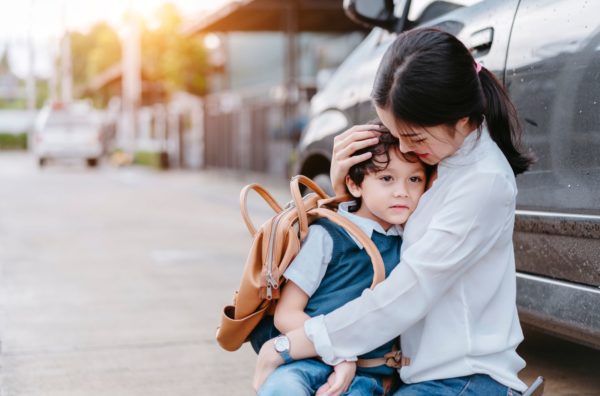Separation anxiety is a common experience for many preschool children when faced with being separated from their primary caregivers. It is a normal part of child development and typically emerges between the ages of 1 and 3. While separation anxiety can be challenging for both children and parents, understanding its causes, symptoms, and strategies for support can help ease the transition into preschool and other separations. This blog aims to shed light on separation anxiety in preschool children and provide guidance for parents and educators in fostering healthy coping strategies.

I. Understanding Separation Anxiety:
a) Developmental perspective: Separation anxiety arises as children develop a stronger sense of object permanence, realizing that their caregivers continue to exist even when they are not present. This newfound awareness can lead to anxiety when separated from familiar and secure attachments.
b) Emotional and cognitive factors: Preschool children may experience separation anxiety due to fear of abandonment, unfamiliar environments, or concerns about their own safety or the well-being of their caregivers.
c) Transitions and changes: Entering preschool or experiencing other significant life changes, such as a new caregiver or moving to a new home, can trigger or intensify separation anxiety in children.
II. Symptoms of Separation Anxiety:
a) Emotional expressions: Preschoolers with separation anxiety may exhibit clingy behavior, excessive crying, pleading, or tantrums when faced with separation from their caregivers.
b) Physical manifestations: Symptoms can manifest physically, such as stomachaches, headaches, nausea, or difficulty sleeping, as the child’s anxiety increases.
c) Reluctance to engage: Children with separation anxiety may be hesitant to participate in preschool activities, avoid social interactions, or resist being left alone in new environments.
III. Strategies for Supporting Preschoolers with Separation Anxiety:
a) Gradual transitions: Gradually introduce separations to help children build confidence and familiarity with new environments. Start with short periods apart and gradually increase the duration over time.
b) Establish routines and rituals: Create consistent and predictable routines around drop-offs and pick-ups. Rituals, such as saying goodbye with a special phrase or a hug, can provide reassurance and a sense of security.
c) Open communication: Talk openly with your child about their feelings and reassure them that you will return. Use age-appropriate language to explain where you are going and when you will be back.
d) Familiarize with the environment: Arrange visits to the preschool or other settings before the actual separation occurs. This allows the child to explore and become comfortable with the new environment, meet teachers or caregivers, and interact with peers.
e) Positive reinforcement: Praise and reward children for their brave behavior during separations. Acknowledge their efforts, no matter how small, and highlight their successes in managing their anxiety.
f) Encourage independence: Foster independence by gradually encouraging children to engage in age-appropriate activities on their own, both at home and in preschool. This helps build their confidence and sense of competence.
g) Consistency and trust: Be consistent with drop-off and pick-up routines, as well as follow-through on promises. Establishing trust and dependability helps children feel secure and reduces anxiety.
IV. Collaboration with Educators:
a) Open communication: Maintain open lines of communication with preschool teachers or caregivers. Share information about your child’s separation anxiety, any strategies that have been effective, and discuss ways to support your child’s adjustment in the classroom.
b) Collaboration on strategies: Work together with educators to implement consistent strategies for transitions and managing separation anxiety. Aligning approaches between home and school environments provides a cohesive support system for the child.
Conclusion:
Separation anxiety is a normal developmental phase in preschool children. By understanding the underlying causes and employing supportive strategies, parents and educators can help children navigate separations with less distress. Gradual transitions, consistent routines, open communication, positive reinforcement, and collaboration between home and school environments all contribute to the development of healthy coping mechanisms and the gradual reduction of separation anxiety in preschool children. With patience, empathy, and support, children can build resilience and adapt to new experiences with greater ease.
